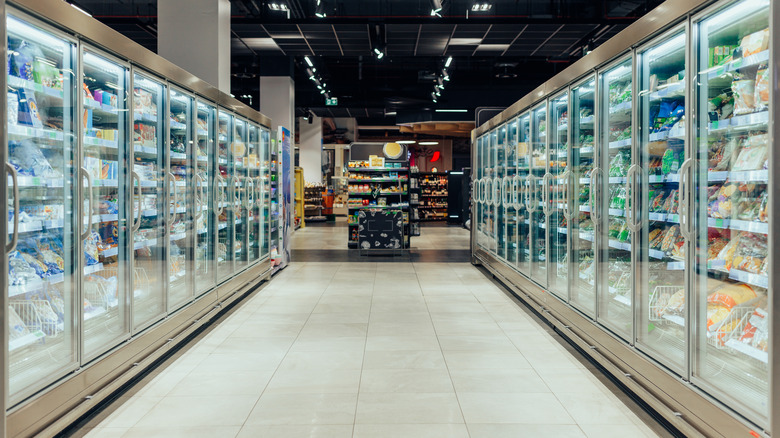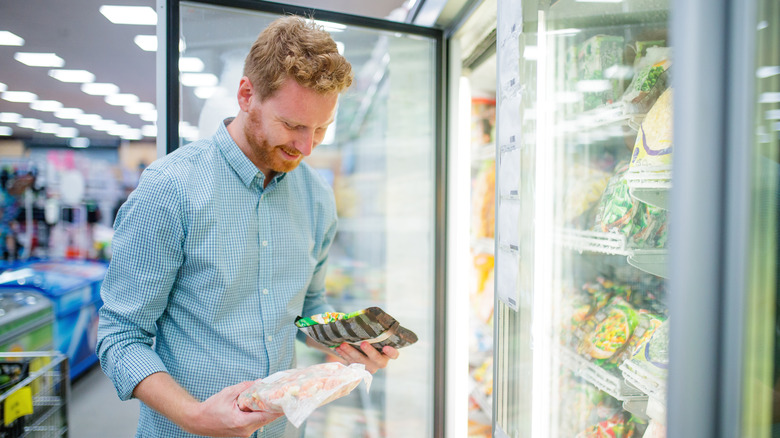Why The Freezer Aisle Was Designed To Be Your Last Stop In The Grocery Store
Have you ever noticed that when you walk into a grocery store, the freezer aisle is usually at the far end as if intended to be your last stop? While the placement could seem like a coincidence, the location of the freezer section in the grocery store is a carefully thought-out design choice that was honed over the decades to optimize the shopping experience (and to keep your food safe).
One of the primary reasons for the placement of the freezer aisle is to ensure you spend as little time as possible shopping after visiting the frozen foods section. Freezer items, like ice cream and frozen vegetables, are highly perishable, and prolonged exposure to room temperature can lead to quality degradation and spoilage. By making the freezer aisle the last stop, grocery stores minimize the time shoppers spend in this section, helping preserve the freshness and quality of the frozen products. While navigating the aisles might be stressful in general, keep in mind some of our other shopping tips for your next trip to the grocery store, such as paying particular attention to color when buying berries or specifically timing your visit for the best produce.
Encouraging impulse purchases and preserving freshness
It's no secret that frozen foods require specific storage conditions to maintain quality, and grocery stores usually leverage this fact by placing the freezer section at the back. This location allows retailers to ensure that the freezer aisle is held at the correct temperature without the interference of outside factors, like warm air from the store's entrance. It also reduces the risk of shoppers leaving frozen items in their carts for extended periods of time, which helps prevent spoilage.
Overall, the layout of a grocery store is carefully planned to guide shoppers through a specific path. Shoppers are encouraged to pick up essentials before reaching the freezer aisle. A typical grocery trip starts out with fresh produce and bakery items near the entrance before progressing through various other sections, such as dairy, meat, and canned goods. This layout promotes a more organized and efficient shopping experience across different store brands, ensuring shoppers notice critical items on their way to the frozen goods.
The placement choices for each section are partially for the store's benefit and partially for the customer. The layout of locations helps preserve the freshness of frozen goods, encourages impulse purchases from shoppers, facilitates efficient shopping, and helps ensure proper temperature control. To make your next visit to the freezer section even easier, we've ranked several frozen dinner brands to save you the trial-and-error headache.

